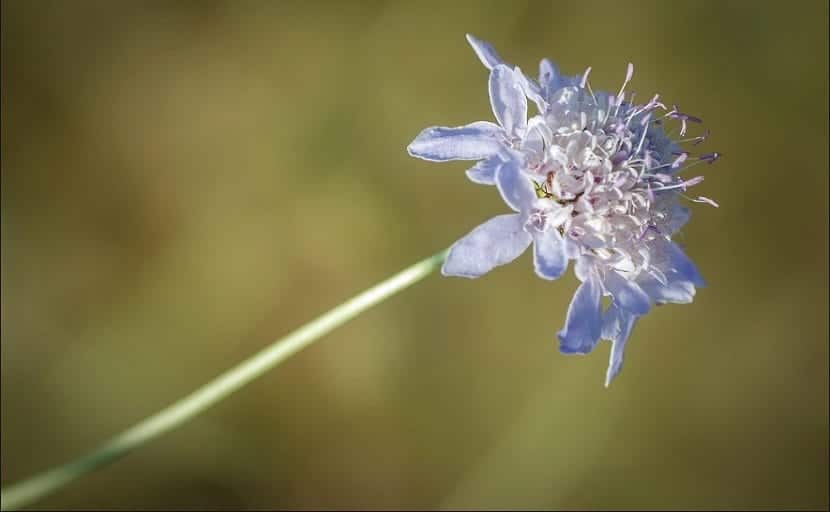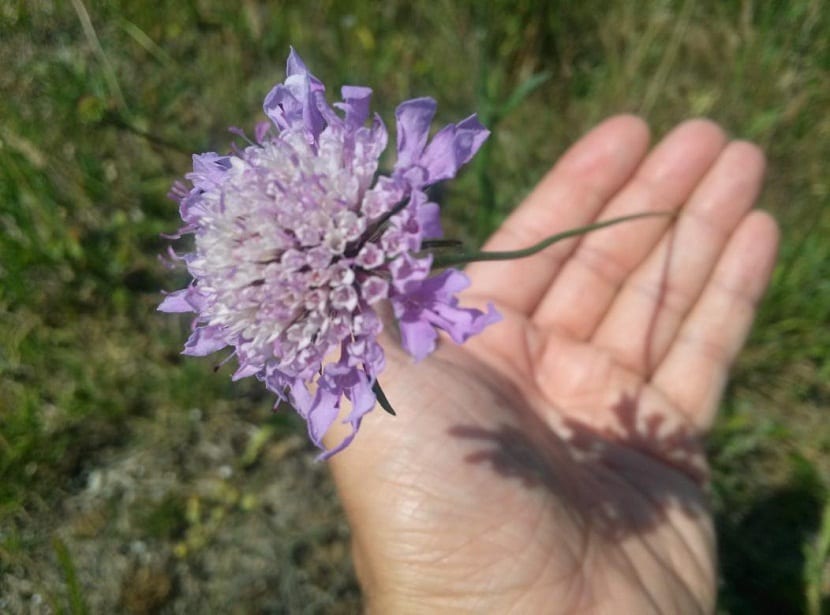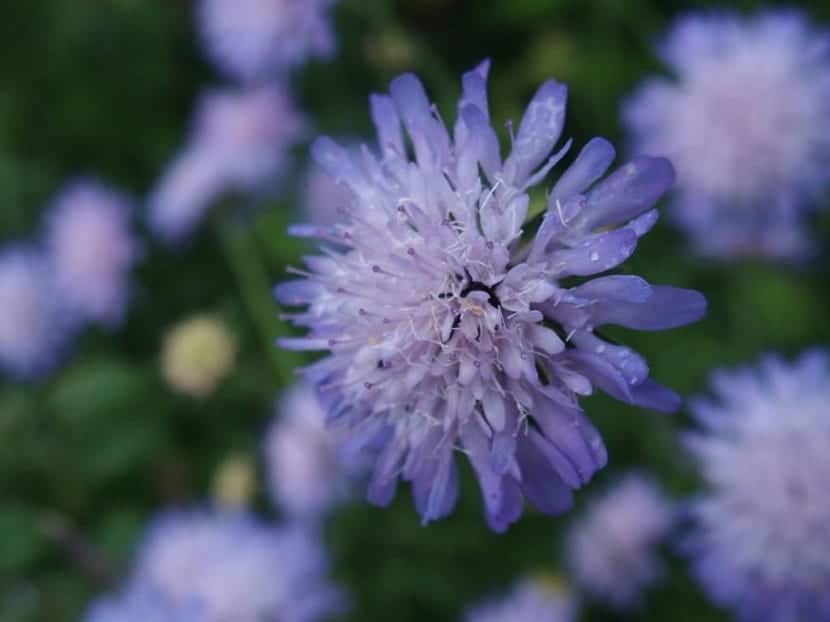
The scabious is also known by the name of 'scabies herb', is found mainly throughout the Mediterranean, growing solitary. It is usually seen on slopes, on the edges of roads, ditches and streams.
Prefers places with a lot of sun and its name comes from Latin and means 'scratch'. All this refers to the fact that this plant since ancient times was used mainly for diseases related to the skin such as scabies.
Scabious plant distribution and habitat

In general, the Scabious is one of the most beautiful and wonderful wild flowers that nature gives us.
This plant whose height reaches one meter is characterized by its 'hairy' appearance. It grows mainly in very dry and alkaline soils, as well, as it has a very long flowering period that goes from summer to autumn.
As well its flowers of rich nectar they have a tendency to attract insects, among which are butterflies.
The leaves are greyish in color and its flowers are very small, lilac in color and some varieties of other color and shades. The stems are brittle, angular and green in color., of which clearer lines cross longitudinally.
The habitat of this plant is located in forest clearings, grasslands, in areas of calcareous substrates, a dry climate and where the sun is abundant. ¿Where to find it? In the Cantabrian Sea, from sea level to 1500 m.
Care
It belongs to the Dipsacáceae family, which form approximately one hundred species of very lively and original plants. The small flowers that make it up are seen in layers and are pillow-shaped. Regarding the color they vary between blue, red, lilac, purple or pink.
The scabious needs exposure to full sun and warm temperatures that oscillate between 15 and 25 ºC.
Farming
The soil for the optimal development and growth of the plant must be very drained, likewise, it must present a condition of little clay and very fertile. Planting is recommended to start in the spring season.
Being a Mediterranean plant requires moderate watering, which should increase in the summer season. I know recommends adding fertilizer once a year, and about every two months add fertilizers.
Plagues and diseases
Scabious plants are resistant to pests and diseases most common in terms of gardening. Annual species can be multiplied by seeds sown in spring. The vivacious ones are multiplied by division of kills.
Medicinal properties

Among its medicinal properties the following can be mentioned:
- It has a high content of tannins, which helps reduce the risks of heart disease.
- As mentioned above, one of its main qualities is that it helps heal scabies and allows wounds to be cleaned and disinfected.
- Taken as an infusion, it helps to clean the blood internally., that is, it acts as a purifier of this.
- It is also widely used to treat cuts, penetrating wounds, burns, and other skin disorders.
- The flowers, leaves and to a lesser extent the rhizome, provide sugars, tannins, bitter principles and lactones.
- It has been used traditionally as a diuretic, purifying, expectorant and sudorific.
- Herbalists recommend it to relieve 'itching', insect bites and is also effective against eczema and dermatitis.
- It is also often used to improve chickenpox, both in children and adults.
- It is also often used to relieve coughs, fever and inflammation.
In general lines and although it is a plant little studied from the medical point of view, It has always been very versatile for many diseases, so it can be used as a healing agent, among other things.
Uses
The scabiosa can be found in the form of a dry plant to prepare infusions, and can be also used for compresses or baths. But it can also be found in the form of an alcoholic tincture, although to a lesser degree and as a homeopathic tincture for commercial purposes.